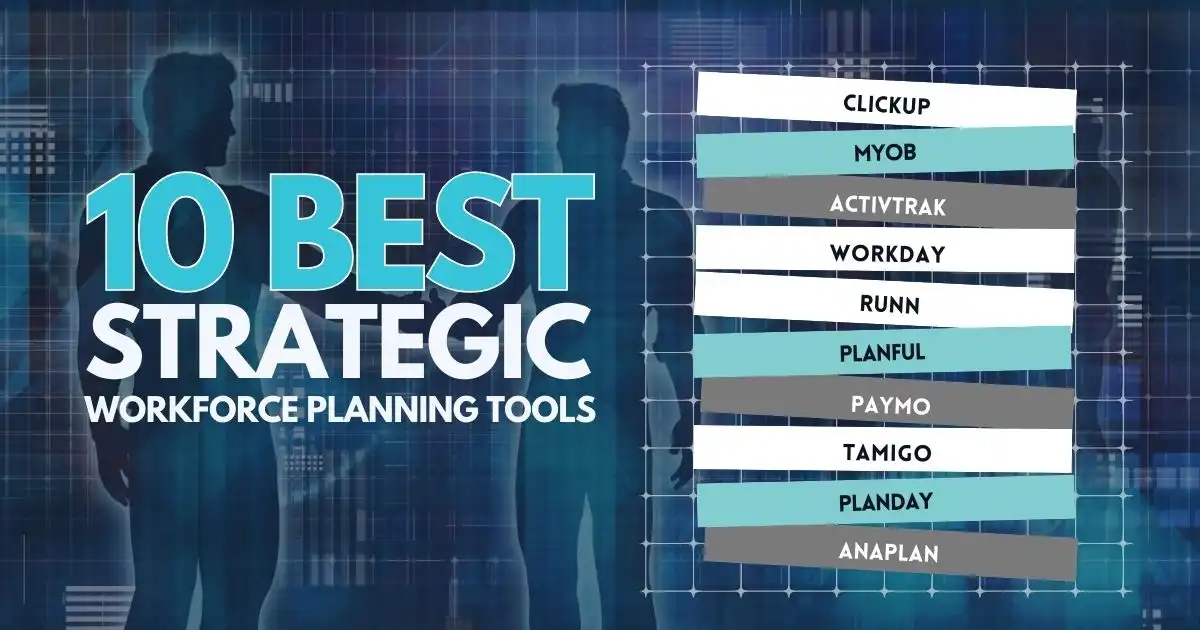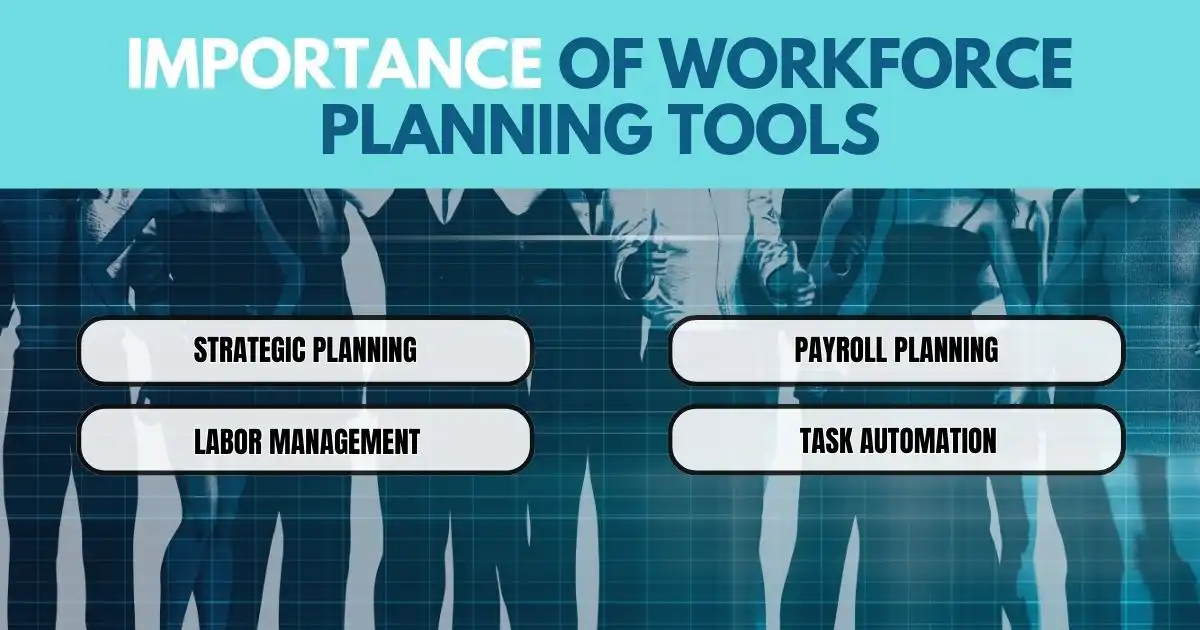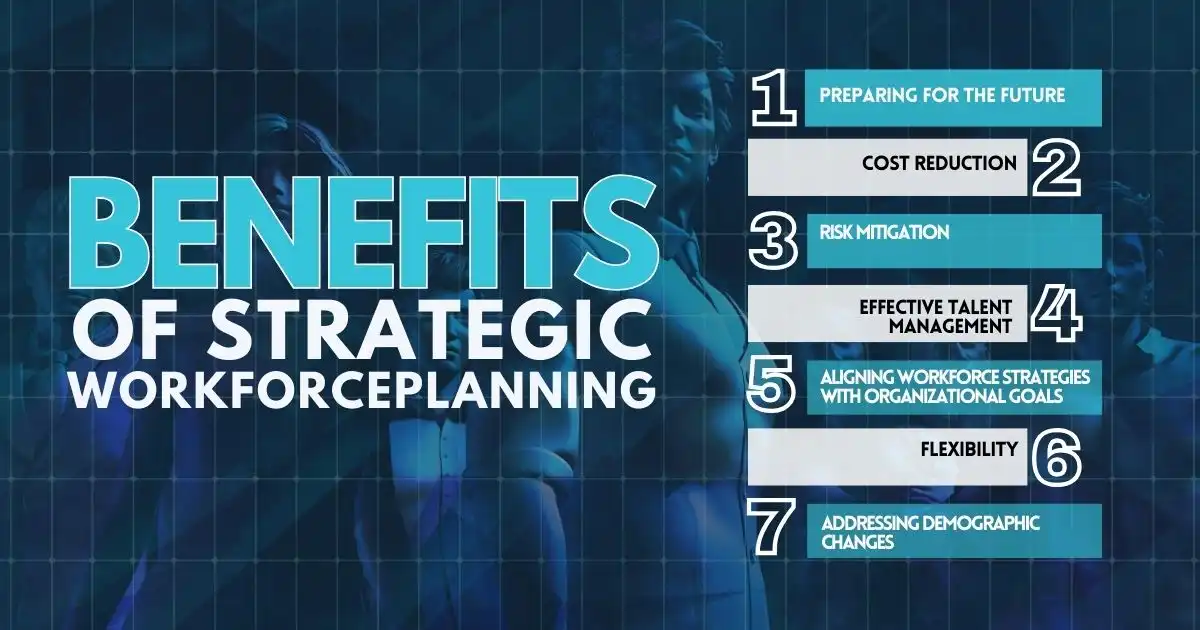Are you struggling to keep up with changes in your team to meet future goals?
Managing a workforce can be challenging amid ongoing shifts. It’s common to feel that your team may lack the skills needed to achieve key objectives, which can add stress. Fortunately, there are strategies to simplify the process and prepare for future needs. A solid plan can help address skill gaps and streamline hiring.
To ensure your team’s future success. There are tools available to help businesses tackle these challenges directly.
What Is Strategic Workforce Planning?
Strategic workforce planning is a process used by HR to look at the current number of employees and their skills, then compare it to what the company will need in the future.
This helps find any gaps in skills or staff and makes sure the business has the right people to reach its future goals. As business needs change, strategic workforce planning helps the company stay flexible by predicting and quickly responding to new challenges.
10 Best Strategic Workforce Planning Tools
Here are the best strategic workforce planning tools to choose for your business in 2024:

ClickUp
ClickUp is a helpful tool that helps you see and manage your work better. It keeps everything organized from big tasks to smaller ones, making it easy for everyone in your team to know what to do.
Best Features of ClickUp
- Custom dashboards to track who is present
- Easy organization of tasks
- Assign tasks and manage resources in one place
- More than 15 ways to view your work
- Works with other apps you already use
- Helpful templates like the ClickUp Workforce Action Template
MYOB
MYOB is more than just accounting software; it helps businesses run smoothly. It connects payroll, HR, and schedules, making it easier to manage employees. With cloud access, you can get real-time data for better planning.
Best Features of MYOB
- Works with over 350 popular apps
- Tools for onboarding, scheduling, and payroll
- Accurate pay through timesheet syncing
ActivTrak
ActivTrak helps you see how employees are working. It helps keep productivity high while looking out for their well-being. By understanding work patterns, managers can help prevent burnout and recognize top workers.
Best Features of ActivTrak
- Custom reports for analyzing employee behavior
- Easy-to-use dashboard with important metrics
- Support and coaching based on behavior
Workday
Workday is a top choice for HR software. It covers payroll, finance, and talent management. Its smart tools help businesses see trends, make decisions, and tailor strategies to fit individual needs. Workday is designed for both HR professionals and employees.
Best Features of Workday
- Special products for different industries
- Comprehensive analytics for smart decisions
- Flexible planning that focuses on people
Runn
Runn is great for planning your team’s work. It looks at more than just numbers; it helps you understand the skills of each team member. You can see how much money your company is making and how everyone fits into the big picture, even if they are working from home.
Best Features of Runn
- Easy to create schedules
- Quick assignments for projects
- Everyone’s schedules in one view
- Forecasting for projects and finances
Planful
Planful is a favorite for teams that want to improve their work. It connects important data about money and how well the team is doing. This helps you be flexible and ready for changes. Its easy-to-use design and smart tools give you useful information when you need it.
Best Features of Planful
- Connects HR, finance, and operations for better planning
- Helpful insights and planning for different scenarios
- Real-time comparisons of planned versus actual forecasts
Paymo
Paymo is your all-in-one tool for managing work. It helps you track time, manage tasks, and bill clients, all in one place. This keeps teams working well together, no matter where they are. Paymo makes it clear what everyone is doing and how much they get paid.
Best Features of Paymo
- Edit time for many tasks at once
- Unlimited invoices and estimates
- Team scheduler and built-in time tracking
Tamigo
Tamigo is designed for businesses like stores and restaurants. It helps manage shifts and schedules, making sure you have the right people working when you need them. Tamigo also helps employees feel happy at work.
Best Features of Tamigo
- Track attendance and manage absences
- Key performance indicators like labor costs
- Compare performance across different locations
Planday
Planday lets employees have a say in their schedules. They can show when they are available, swap shifts, and request days off. This helps keep staffing levels just right and improves communication.
Best Features of Planday
- Shift swapping and availability settings
- Real-time information updates
- Tools for time tracking and payroll
Anaplan
Anaplan connects important data across your business. It helps with making smart decisions by linking financial goals with workforce strategies. This helps you see the big picture and make better choices.
Best Features of Anaplan
- Real-time insights on employee performance
- Identify talent gaps and their financial impact
- Connects data for a clear business view
Importance of Workforce Planning Tools
Workforce planning helps you determine how many employees you need to meet your business goals now and in the future. Since your organization’s success depends on your team’s skills, it’s important to ensure they have what they need to succeed. You should also consider the costs of training and keeping your workforce when planning your budget.
Organizations use workforce planning software for several reasons:

- Strategic Planning
Workforce planning tools help align HR planning with the business strategy. This allows decision-makers to make smart choices by modeling different scenarios and evaluating risks.
- Labor Management
Managing a workforce with full-time, part-time, and temporary workers can be tough. It involves tracking employee transfers, costs, and future workforce needs.
- Payroll Planning
Paying employees can be complex with different types of workers, which can expose sensitive information. Workforce planning solutions help by providing secure user permissions for HR processes.
- Task Automation
Workforce planning tools automate tasks like demand forecasting and supply analysis. This makes work easier and helps with pay calculations.
In uncertain business environments, companies using workforce planning solutions can make faster, data-driven decisions and gain an edge over competitors.
Benefits of Strategic Workforce Planning
Implementing a strategic workforce planning model offers several advantages. Here are some key benefits:

- Preparing for the Future – Planning for change helps organizations ready themselves for expected and unexpected challenges. Identifying essential roles and skills keeps businesses prepared for market shifts and new technologies. Workforce analysis tools can assist in this preparation.\
- Cost Reduction – Hiring the right number of skilled employees reduces costs linked to overstaffing and turnover, maximizing budget efficiency.
- Risk Mitigation – A well-planned workforce strategy considers current and future needs, helping reduce risks associated with staffing levels and skills gaps. Effective workforce analysis tools enable better forecasting and assessment.
- Effective Talent Management – Attracting and retaining skilled employees is vital. A strong talent pipeline replaces retiring leaders, creating a competitive edge. Investing in workforce tools enhances talent management efforts.
- Aligning Workforce Strategies with Organizational Goals – Planning for the future aligns workforce strategies with business objectives, ensuring organizations build a workforce that supports upcoming goals.
- Flexibility – Companies must be agile in building their workforce. Strategic workforce planning enables organizations to develop skills and focus resources where needed. The right workforce modeling software helps businesses adapt to changing circumstances.
- Addressing Demographic Changes – An aging workforce presents challenges like skill shortages and experienced worker retirements. Strategic workforce planning helps organizations anticipate these issues, avoiding skills gaps. Workforce tools can track demographic changes and inform strategy adjustments.
FAQs
What is a workforce planning platform?
A workforce planning platform is software that helps organizations analyze and plan their workforce needs to align HR strategies with business goals.
How do workforce forecasting tools assist businesses?
Workforce forecasting tools predict future workforce needs based on trends, enabling informed decisions on hiring and resource allocation.
What features are in enterprise workforce planning software?
Enterprise workforce planning software includes strategic planning, labor management, payroll planning, and task automation for effective workforce management.
Why use workforce planning software?
Workforce planning software streamlines HR processes, improves decision-making, and reduces costs, allowing companies to stay agile and responsive.
